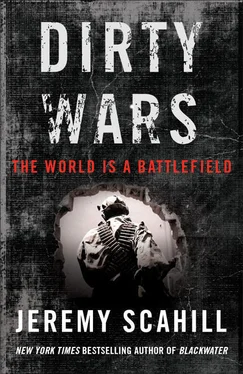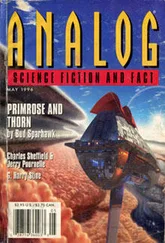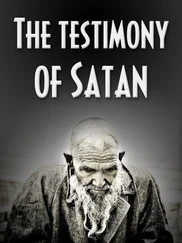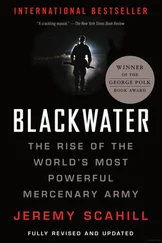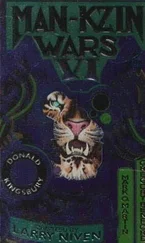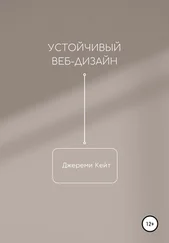Although the CIA was supposed to be the main agency conducting covert actions, the National Command Authority—which consisted of the president and Rumsfeld—could choose to use Title 50 authorities for organizations other than the CIA, by delegating military assets to CIA operations. JSOC, for example, had been used for covert actions in order to operate in politically volatile areas without repercussions under international law or to supersede Congress’s authority to declare war. Title 10 operations conducted in “Preparing the Battlespace” had even fewer congressional reporting requirements, and with the congressional resolution authorizing a global war, the National Command Authority could use its power to direct military operations without having to classify them as covert actions. This had always been a gray area open for exploitation. And that was attractive to Cheney and Rumsfeld and their teams as they plotted their “Next Steps.”
Rumsfeld had major plans for Special Ops—and they didn’t include any CIA control or meddling. Cofer Black’s departure opened a door for Rumsfeld to assert more control over the dark wars. But it wasn’t just the Agency or Congress that Rumsfeld wanted to cut out of the equation. It was also the conventional military bureaucracy and military brass, which he believed had grown soft and gun-shy. “The worst way to organize for a manhunt…is to have it planned in the Pentagon,” Rumsfeld wrote in an internal memo laying out a vision for SOF units to begin striking globally. “We must be willing to accept the risks associated with a smaller footprint.” On July 22, 2002, Rumsfeld sent a secret directive to General Charles Holland, the SOCOM commander, envisioning a decentralized “manhunt” that would circumvent the traditional military command structure and operate more like a private hit team. He instructed Holland to “develop a plan” to deal with al Qaeda and associated groups. Rumsfeld explained that going forward, they would need to find a way to “cut through” the Pentagon bureaucracy and process deployment orders “in minutes and hours, not days and weeks.” He added: “The objective is to capture terrorists for interrogation or, if necessary, to kill them, not simply to arrest them in a law-enforcement exercise.” But Holland “did not respond as swiftly and dramatically as people in Washington thought he should,” recalled Lawrence Wilkerson, a retired colonel who served thirty years in the army. “People in Washington, in this case, being Rumsfeld and Cheney.” The general came back with a five-year plan when Rumsfeld wanted immediate action.
As Rumsfeld and Cheney pushed for Special Ops to start hitting globally, top military commanders expressed concern that those plans outpaced the military’s abilities to collect and exploit intelligence. Some JSOC teams in Afghanistan had found themselves in turf battles with other JSOC teams and, though they did kill a tremendous number of Afghans and foreign fighters, whom exactly it was they were killing was not always clear. A big problem was a lack of solid intelligence. While the CIA was taking the lead in hunting down High Value Targets (HVTs), Rumsfeld was simultaneously pushing JSOC’s men to yield results. But without good intel, they were chasing ghosts.
When Rumsfeld proposed beefing up JSOC and taking it global, General Holland pushed back. He told Rumsfeld he was concerned about the lack of “actionable intelligence” in the emerging proposed target regions. One senior military commander said bluntly that “the intelligence wasn’t good enough to allow us to have a campaign like that.” Rumsfeld and his deputies reportedly ridiculed the commanders, particularly General Holland, for what they saw as excessive caution. A Pentagon adviser who worked closely with Rumsfeld at the time told the investigative journalist Seymour Hersh that Rumsfeld and his team were convinced that “there [were] few four-stars leaning forward in the Special Operations Command,” and that more “fighting generals” were needed, and further, the high-ranking military officers who came up during the Clinton years would need to be “reassessed.”
More to Rumsfeld’s liking was General Wayne Downing, who had been called out of retirement after 9/11 to serve as deputy national security adviser and coordinate the US campaign targeting terrorist networks and “those who support them.” Although he technically reported to National Security Adviser Rice, he would be JSOC’s advocate within the White House. Downing pushed for JSOC to return to its roots as a “blacker/lower visibility force,” employing “a preemptive posture, with improved find and fix capabilities for sustained operations.” He began pushing for Special Operations Forces to prepare for “the future indirect and clandestine GWOT fight in countries with which we are not at war” and to conduct operations “in multiple, sensitive, non-permissive and denied areas.” He recommended that JSOC should report directly to the secretary of defense and not run its operations through the conventional chain of command.
In reality JSOC was already being freed. While Downing went through official channels, Wilkerson said Rumsfeld and Cheney had already “bypassed Special Operations Command and went straight into Fort Bragg and began giving directions for Special Operating Force activities, direct action in most cases, directly from the Vice President’s office to the Joint Special Operations Command.” Within months, Holland would be relieved of his SOCOM post.
It was the beginning of what would be a multiyear project by Rumsfeld and Cheney to separate this small, elite, surgical unit from the broader chain of command and transform it into a global killing machine. Before 9/11, they had big plans for JSOC, but the terrorist attacks gave them all the ammunition they would need to win their own war against oversight of these elite and highly lethal forces.
“What I was seeing was the development of what I would later see in Iraq and Afghanistan, where Special Operations Forces would operate in both theaters without the conventional commander even knowing what they were doing,” said Wilkerson. “That’s dangerous, that’s very dangerous. You have all kinds of mess when you don’t tell the theater commander what you’re doing.” Wilkerson told me that when he worked in the Bush administration, “You had JSOC operating as an extension of the [administration] doing things the executive branch—read: Cheney and Rumsfeld—wanted it to do. This would be more or less carte blanche. ‘You need to do it, do it.’ It was very alarming for me as a conventional soldier.”
There was no love lost between the CIA and Rumsfeld and Cheney over the emerging Iraq War intelligence game. And, as they planned other wars, they didn’t trust the CIA’s analysts to provide them with intelligence required to hit, early and often, globally. Rumsfeld believed that Special Operations needed its own intelligence operation specifically aimed at fueling the global kill/capture campaign. JSOC already worked closely with the famed signals intelligence operation, the Intelligence Support Activity, or simply the Activity. Also known as Gray Fox, the unit specialized in operational electronic surveillance and intercepts. But Rumsfeld also wanted an entity that mirrored the capabilities of the CIA—one that was built on human intelligence, known in the community as HUMINT. In the spring of 2002, a commission chaired by former National Security Adviser Brent Scowcroft recommended that the NSA, the National Reconnaissance Office and the National Imagery and Mapping Agency be removed from Pentagon control and handed over to the CIA. Rumsfeld pushed back violently and moved US intelligence in the exact opposite direction.
In April 2002, Project Icon was launched. The funding for the program came from “reprogrammed” Pentagon funds and was not briefed to congressional intelligence committees. The “new clandestine teams” made up of “case officers, linguists, interrogators and technical specialists” were deployed alongside Special Ops Forces with renewed focus on gathering human intelligence—from the field interrogations, surveillance and the running of local sources and assets. After initially operating under classified code names, the secret program would later become known as the Strategic Support Branch, or SSB. In July 2002, President Bush transferred Gray Fox to the Special Operations Command by executive order, giving Rumsfeld control over a huge portion of US intelligence assets and systems. This new shop, consisting of Gray Fox working together with SSB, would provide real-time intelligence to Special Ops Forces to target suspected militants, prevent future attacks and “prepare the battlefield” for potential military operations. In short, it would fuel a global manhunt. If Doug Feith’s intelligence shop was meant to threaten the supremacy of the CIA’s analysts, the SSB was meant to supersede the authorities of the Agency’s human intelligence structures.
Читать дальше
